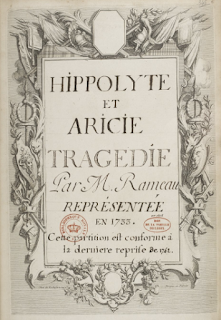Wagner – Der Fliegende Holländer
 La Monnaie, Brussels, Sunday December 11 2005
La Monnaie, Brussels, Sunday December 11 2005Conductor: Kazushi Ono. Production: Guy Cassiers. Der Holländer: Egils Silins. Senta: Anja Kampe. Daland: Alfred Reiter. Erik: Torsten Kerl. Mary: Jacqueline van Quaille. Der Steuermann: Jörg Schneider. Orchestra and chorus of La Monnaie.
Is performing operas without a break a new fashion? Fortunately last Friday’s Boris was the 1869 version and Wagner’s My young man’s a dustman has a running time of only 2 and a quarter hours… But even so, if you’re in the middle of a row, you can’t escape before the end. I wonder if tonight’s Viaggio a Reims will be done in a single stretch. Never two without three, as the French say…
La Monnaie has a habit of finding new or lesser-known voices worth hearing and Sunday was no exception. The main “trio” was strong and it’s hardly their fault if the last Dutchmen I saw involved people like Deborah Voigt, Falk Struckmann or Albert Dohmen, putting odious comparisons in my mind and making a tough customer of me.
Egils Silins is a tall, youthful, fair-haired Holländer with a powerful voice, the only weakness being (and this is common: Wotan in the Châtelet’s Ring comes to mind) loss of body, vibrato and to some extent control at the bottom. Torsten Kerl (the only one whose name did mean something to me: I first heard him as an impressive Paul in Die tote Stadt) is a reliable Heldentenor, possibly lacking a touch of character.
Young Anja Kampe did a pretty good job of Senta but I wonder if she isn’t going to far too fast: if I read her biography right, less than 5 years ago she was singing Despina, Zerlina and Rossini’s Fiorilla… She showed some signs of inexperience, as if not always in perfect control of her large, creamy voice; and in that case, why not take the time needed to gain some in what you might call “intermediate” roles?
Although Alfred Reiter actually recorded Friedenstag alongside Voigt and Dohmen, he is not at their level: the words that came to mind yesterday were “inadequate” and “congested,” or “muffled.” Jörg Schneider’s was a sweet, agreeable tenor, though not strong and perhaps too lyrical for that particular yo-ho-ho-and-a-bottle-of-rum part. Jacqueline van Quaille’s Mary was only just audible.
The chorus was on great vocal form. The orchestra, however, was audibly not the VPO, and to my ear Ono let the tension drop and lacked drive at times when the music and plot would both seem to call for it.
La Libre Belgique claimed that this Dutchman should go down in the annals as one of La Monnaie’s best productions. That was placing the bar very high – production standards at la Monnaie are remarkably good – and I don’t think it was altogether true. To me there was a disconnect between the unconvincing work of the director and choreographer and the excellent visual aspects supplied by the design and technical teams.
The chorus seemed wholly unconvinced by the pertinence of the mysterious rhythmic movements and gestures they were asked to perform as they sang – the choreographer’s contribution. The soloists appeared to have been left to their own devices and sang quite conventionally from the apron, legs apart and arms by their sides. Only in the final scenes did they really seem involved.
Visually, however, though not entirely comprehensible (those hands: the chorus’s sign language, hands at the portholes, hands projected…) this production was interesting and evocative.
There were no sets as such on the bare, dark, Monnaie stage, whitewashed roughly at the rear. Imagine a segment of a giant, riveted copper cylinder, about one third of the total circumference, attached by a steel gantry to a motorised centre-post so that this segment could turn, slowly, rather like a radar. There were two of these on stage, one very large (the Dutchman’s) to the rear at the left, the other (Daland's) further forward to the right, this one smaller and with portholes. As they turned, they evoked ships’ bridges, ships’ hulls or, as I mentioned, radars – Senta, Daland and the Dutchman ever scanning the horizon.
Dappled images – of a boiling sea, of a rocky landscape, of drowned men, etc - were projected from the centre-posts to the curved inner walls as they turned, casting, through the portholes on to the wall behind, roundels of light, like a lighthouse.
A third element, a sort of copper partition with a doorway cut into it (Senta’s) also turned as it was lowered on a post from above. (Three radars, then: Senta’s, the Dutchman’s and Daland’s). The lower part of this was literally frozen: white with frost and steaming in the lights. As well as the projections inside the curving copper structures, there were others on the full widhth of the rear wall, of rippling water or underwater figures. The chorus moved in and out of the circular structures, the principles entered and exited through Senta’s frozen doorway.
At the very end, Senta, now alone on stage, passed one last time through the now thawed doorway into a blaze of “hot” spotlights at stage rear. A powerful image in a production of great visual strength. It would be nice, now, to see the same staging with a different director injecting some dramatic conviction into the proceedings.



Comments
Post a Comment